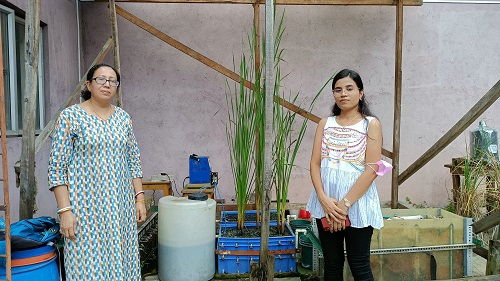
Guwahati: Indian Institute of Technology Guwahati Researchers have carried out a study of coal mines on the ‘bioremediation’ of Acid Mine Drainage (AMD) in Constructed Wetlands. This is the first study to demonstrate the bioremediation of AMD from the Northeastern Coalfields (NEC) using Constructed Wetlands.
Acid Mine Drainage refers to the acidic wastewater generated from coal mines (or any polymetallic mines) containing high amounts of sulfate, iron and various toxic heavy metals.
This research provides an efficient sustainable treatment approach to mitigate AMD pollution while addressing the long-term operational sustainability issues encountered in Constructed Wetlands receiving AMD. Furthermore, a biochemical mechanism has been developed to understand the functioning of different fundamental processes that co-occur in Constructed Wetlands.
The Key Benefits of this Research include optimization of parameters with the use of simple organic carbon to provide an effective sustainable solution for the mitigation of AMD pollution.
The research was led by Prof. Saswati Chakraborty, Department of Civil Engineering, IIT Guwahati, along with her Research Scholar Ms. Shweta Singh who studied the season-wise variation (Monsoon, Pre-Monsoon and Post-Monsoon) of AMD discharge in NEC. The research team has conducted a laboratory-scale study in which preliminary findings demonstrated its potential for field-scale applications at the NEC for direct mine drainage.
This research developed an experimental methodology for the bioremediation of AMD and recommended optimizing the COD/sulfate ratio for the long-term treatment of AMD in CWs. Results have successfully demonstrated the elimination of high acidity, sulfate and metals. Thus, it will help control water pollution and improve water quality through ecosystem restoration of the region.
Highlighting the impact of the research, Prof. Saswati Chakraborty, Department of Civil Engineering, IIT Guwahati, said, “The preliminary findings from this research propose an effective strategy to manage the extremely acidic AMD from the NEC, which remains to be a challenging source of water pollution and environmental contamination due to mining activity in this region.”
Speaking about this Research, Ms. Shweta Singh, Research Scholar, IIT Guwahati, said, “The generation of AMD is a perpetual environmental issue from the NEC and to address this concern, we investigated the potential bioremediation approach using nature-based technology - CWs and obtained some very promising results which can be further implemented at field-scale applications by coal mining industries.”
The present research work provides a better experimental explanation for sustainable long-term treatment approach to mitigate AMD pollution using simpler organic carbon source in CWs.
Click Here for More Science & Technology
